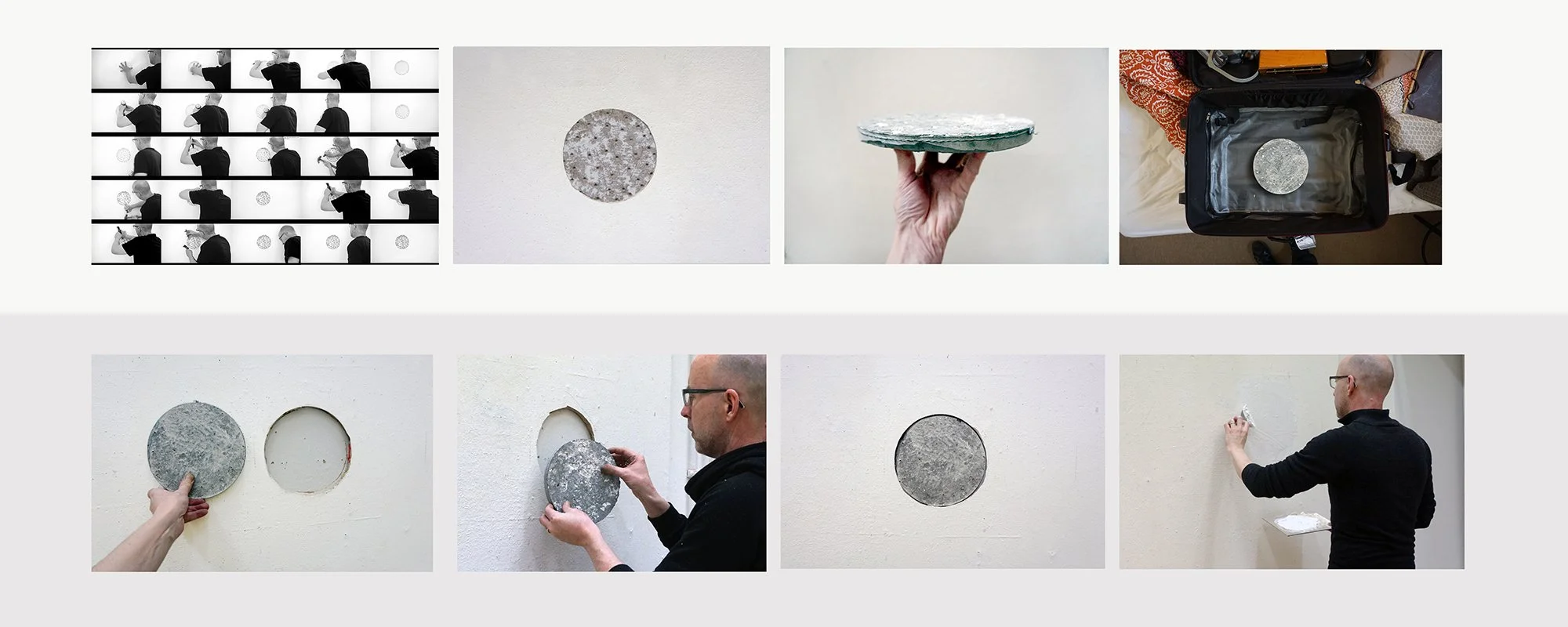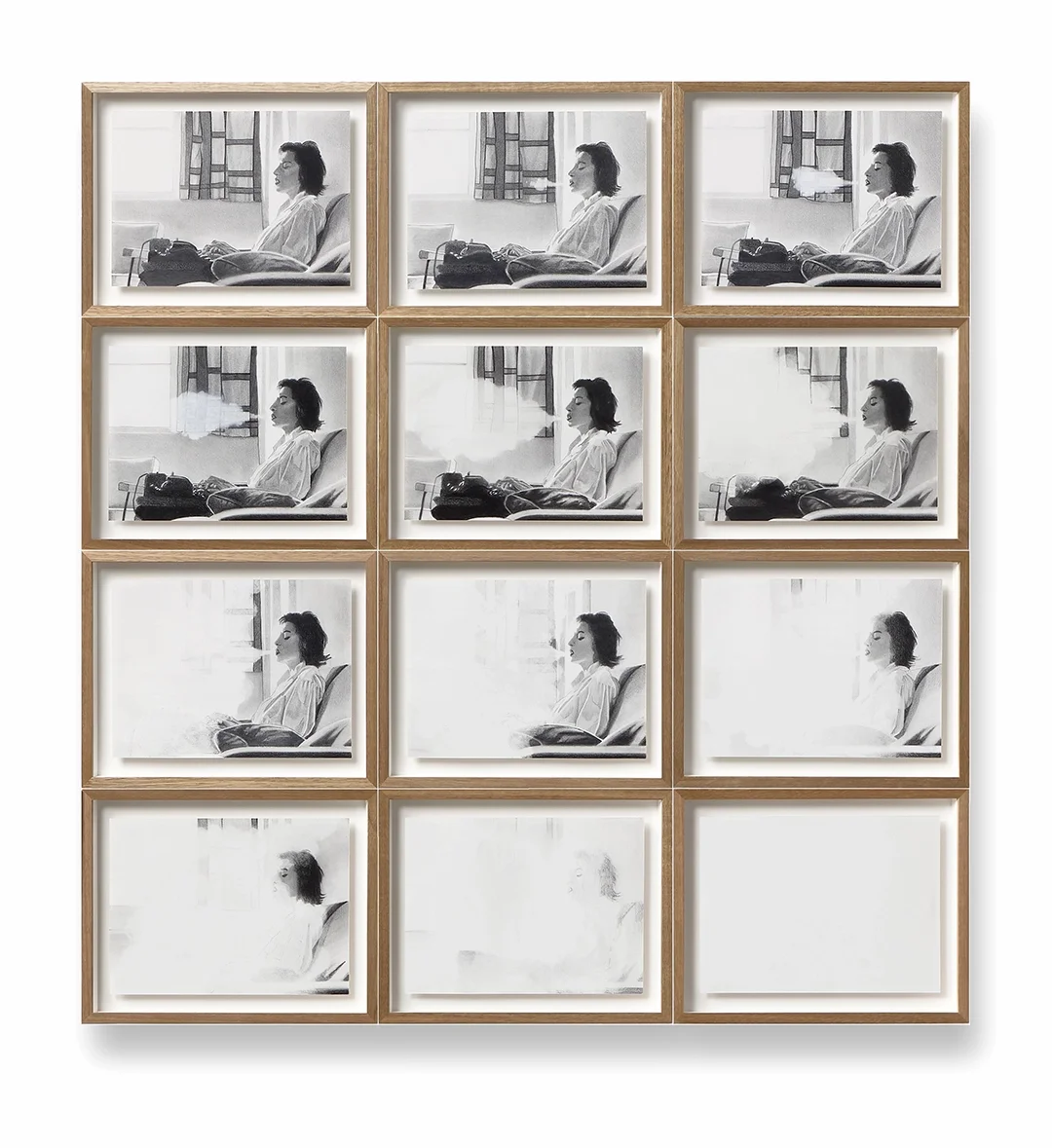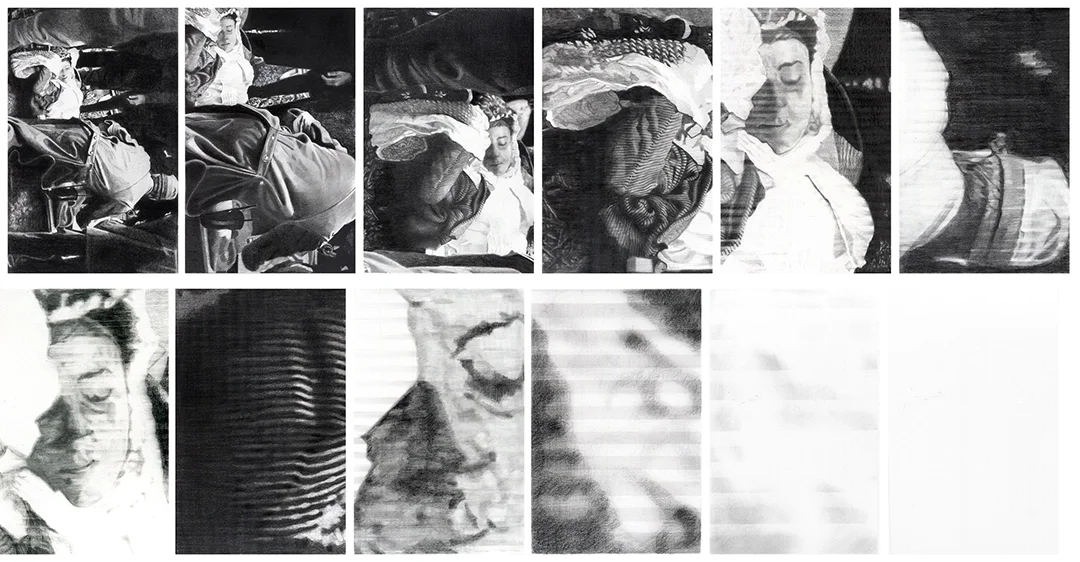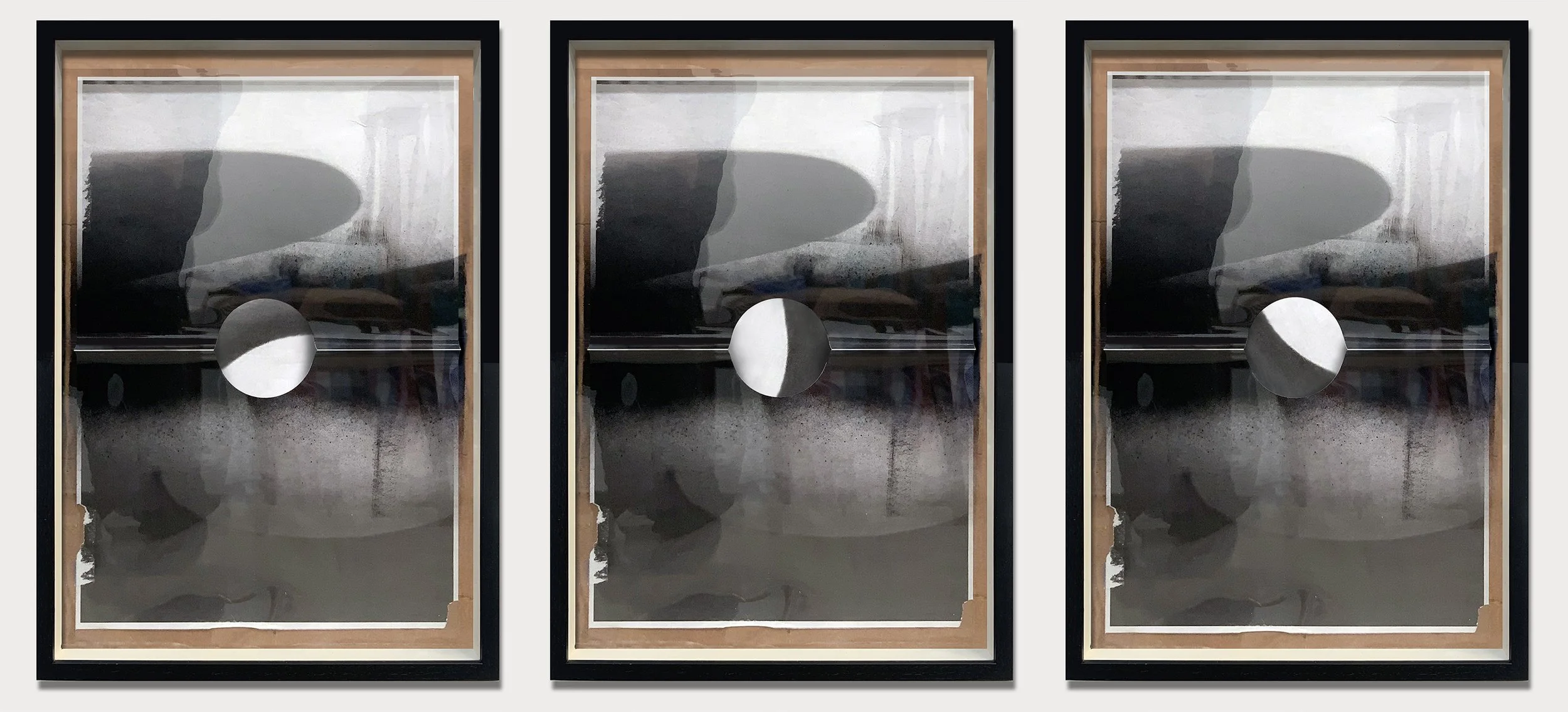Mark Hislop lives and works in Naarm, on the land of
the Wurundjeri people of the Kulin Nation.
STATE to STATE 2025
Void_Melbourne
11 October—8 November 2025
State to State brings together works that explore transformation through two distinct but related approaches. The first involves the literal movement of materials— a segment of the artist’s studio wall transported between cities, embedded in new locations creating permanent physical exchanges between distant sites. The second explores transformation through drawing, where images undergo changes of state: breath progressively obscures an image, a photograph slowly dissolves into abstraction through repeated acts of mark-making.
Spanning ten years of Mark Hislop's practice these approaches reveal transformation as both physical displacement and perceptual shift. Whether moving matter across distances or tracing the movement from representation to abstraction on paper, the works focus less on destinations than on the spaces where change occurs—the hidden disk connecting distant studios, the moment breath begins to erase what it also creates, the incremental zoom that transforms document into poetry.
Invisible Architectural Fact: MEL/HEL/MEL (2015–16) / BWK/BKE/BWK (2025 extends Hislop's project MEL/HEL/MEL (2015-2016) with a new iteration completed this year, BWK/BKE/BWK (2025). For State to State, the artist has extracted a circular section of wall from his studio in Brunswick, Melbourne and embedded it into the gallery wall at Void_Melbourne, a contemporary space housed in a six storey building designed by Godfrey and Spowers in 1929 and known for its eclectic mix of the terracotta-clad facade, sandstone base and decorative Egyptian motifs. As in the original work, he has extracted a corresponding section from the building’s structure to fill the space left in his studio, creating sites of permanent reciprocal connection that the artist refers to as invisible architectural facts.
MEL/HEL/MEL began in November 2015, when Hislop commenced a three-month residency at the Helsinki International Artist Program (HIAP). Before departing Melbourne, he removed a small section of wall from his studio—fragments of paint and plaster—and cast these materials into a concrete disk measuring 20cm in diameter and 1.5cm deep. He took this disk to Helsinki, where he embedded it into his residency studio wall, carefully extracting a corresponding circular section to return to Melbourne. Both disks were concealed with plaster and paint, making them invisible to future occupants. They still exist , hidden and present.
The completed work exists as two permanent, hidden installations: a piece of Melbourne embedded in a Helsinki studio, and a piece of the Helsinki studio embedded in Hislop's Melbourne studio. Neither intervention is detectable without prior knowledge of its existence. By embedding interventions directly into architectural structures, the work becomes part of the building’s hidden material history, examining how built environments shape social relations while creating permanent reciprocal connections between distant locations.
To be sure, the geographical movement of material creates a profound transformation in both iterations of Invisible Architectural Fact. The works exist in a permanent states of displacement, forever foreign to their locations while simultaneously becoming integral to their adopted architectural fabric. The material undergoes a change of state from visible to invisible, from documented process to hidden presence.
The drawing works in the exhibition engage with different kinds of state change—transformations that are temporal, perceptual, and ontological.
My punctuation is my breath 2019
graphite and charcoal on paper
15 x 23 cm each (12 parts)
My punctuation is my breath (2019) is a twelve-part drawing sequence that engages with the literary legacy of Clarice Lispector, the Brazilian writer who conceptualised literature as process, an arduous mode of searching rather than resolution. Self-identified as an anti-writer, Lispector's work interrogated structures of power and gender through attention to subjective interiority.
In this work Lispector's image moves through states of visibility, progressively obscured by the very breath that enables her literary voice. The work charts a movement from presence to absence, where each drawing represents a state in this process. The form of the drawing charts a movement from presence to absence. The recurring image of Lispector at her typewriter becomes increasingly obscured by her own breath— a contradictory and seemingly ironic gesture that keeps the momentum of the drawing moving forward whilst at the same time effacing the drawing, reflecting the writer's, and the artist’s, complex relationship with language and meaning.
It is to the air that I dedicate myself 2018
graphite and charcoal on paper
23 x 15 cm each (12 parts)
It is to the air that I dedicate myself (2018) takes as its starting point French pilot Raymonde de Laroche, the first woman to receive a pilot's licence and a pioneer in testing early powered aircraft. An actress, artist, and sportswoman, de Laroche spoke of her ethereal connection to flight, declaring shortly before her death in a 1919 accident: "It is to the air that I dedicate myself."
Working from a single photograph of de Laroche taken at the scene of her death, each drawing incrementally zooms in, moving from representation toward abstraction. Through this process, drawing both challenges the authority of the original photographic document and evokes de Laroche's poetic, immaterial relationship to flying. Each incremental zoom represents a change of state—from representation to abstraction, from the weight of historical documentation to the lightness of poetic interpretation. De Laroche's dedication "to the air" becomes a literal dissolution into abstraction, her physical form gradually giving way to the immaterial realm of the air that she claimed as her domain.



